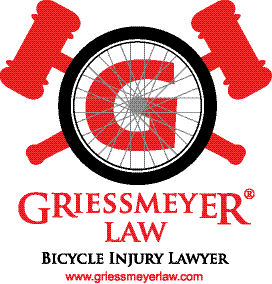What Side of the Road Should You Ride Your Bike On?
In Wisconsin, the law requires people who walk on roadways to walk against traffic.
346.28 Pedestrians to walk on left side of highway; drivers to yield on sidewalks.
(1) Any pedestrian traveling along and upon a highway other than upon a sidewalk shall travel on and along the left side of the highway and upon meeting a vehicle shall, if practicable, move to the extreme outer limit of the traveled portion of the highway.
(2) Operators of vehicles shall yield the right-of-way to pedestrians, personal delivery devices, bicyclists, and riders of electric scooters and electric personal assistive mobility devices on sidewalks as required by s. 346.47.
The law requires people who ride bicycles to ride with traffic.
346.80 Riding bicycle, electric scooter, or electric personal assistive mobility device on roadway.
(1) In this section, “substandard width lane" means a lane that is too narrow for a bicycle, electric scooter, or electric personal assistive mobility device and a motor vehicle to travel safely side by side within the lane.
(2)
(a) Any person operating a bicycle, electric scooter, or electric personal assistive mobility device upon a roadway at less than the normal speed of traffic at the time and place and under the conditions then existing shall ride as close as practicable to the right-hand edge or curb of the unobstructed traveled roadway, including operators who are riding 2 or more abreast where permitted under sub. (3), except:
1. When overtaking and passing another vehicle proceeding in the same direction.
2. When preparing for a left turn or U-turn at an intersection or a left turn into a private road or driveway.
3. When reasonably necessary to avoid unsafe conditions, including fixed or moving objects, parked or moving vehicles, pedestrians, animals, surface hazards or substandard width lanes that make it unsafe to ride along the right-hand edge or curb.
(b) Notwithstanding par. (a), any person operating a bicycle, electric scooter, or electric personal assistive mobility device upon a one-way highway having 2 or more lanes available for traffic may ride as near the left-hand edge or curb of the roadway as practicable.
(c) Any person operating a bicycle, electric scooter, or electric personal assistive mobility device upon a roadway shall exercise due care when passing a standing or parked vehicle or a vehicle proceeding in the same direction and, when passing a standing or parked vehicle that is a school bus that is not displaying flashing red warning lights as provided in s. 346.48 (1) or a motor bus, shall allow a minimum of 3 feet between the bicycle, electric scooter, or electric personal assistive mobility device and the vehicle.
Some people think it is safer to ride a bicycle against traffic because the chance of getting hit from behind is decreased. The problem with riding against traffic is that people who drive motor vehicles who turn right on stop signs, green lights, and out of driveways do not expect a person to come from their right at a significant speed. Oftentimes people turning motor vehicles to the right only look left because that is the direction something could harm them from. Thus, safety and the law provide good reason to ride with traffic and not against.
